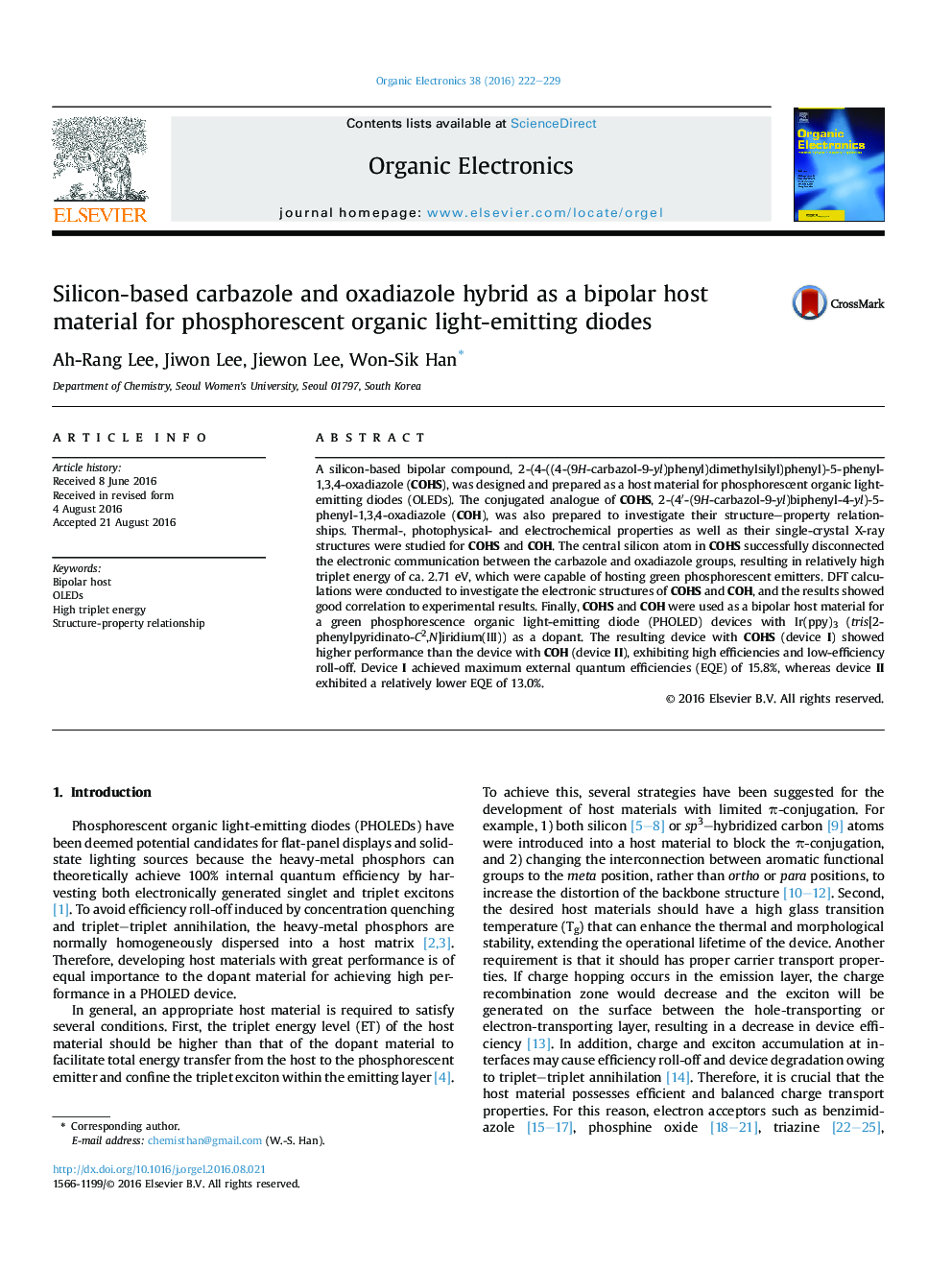| Article ID | Journal | Published Year | Pages | File Type |
|---|---|---|---|---|
| 1264164 | Organic Electronics | 2016 | 8 Pages |
•The effects of silicon atom in bipolar host material were systematically investigated by comparing its conjugated analogue.•Incorporating silicon atom results wider HOMO–LUMO band gap and higher triplet energy level.•A device using silicon based bipolar host material showed higher performance than that of a device using conjugated analogue.
A silicon-based bipolar compound, 2-(4-((4-(9H-carbazol-9-yl)phenyl)dimethylsilyl)phenyl)-5-phenyl-1,3,4-oxadiazole (COHS), was designed and prepared as a host material for phosphorescent organic light-emitting diodes (OLEDs). The conjugated analogue of COHS, 2-(4′-(9H-carbazol-9-yl)biphenyl-4-yl)-5-phenyl-1,3,4-oxadiazole (COH), was also prepared to investigate their structure–property relationships. Thermal-, photophysical- and electrochemical properties as well as their single-crystal X-ray structures were studied for COHS and COH. The central silicon atom in COHS successfully disconnected the electronic communication between the carbazole and oxadiazole groups, resulting in relatively high triplet energy of ca. 2.71 eV, which were capable of hosting green phosphorescent emitters. DFT calculations were conducted to investigate the electronic structures of COHS and COH, and the results showed good correlation to experimental results. Finally, COHS and COH were used as a bipolar host material for a green phosphorescence organic light-emitting diode (PHOLED) devices with Ir(ppy)3 (tris[2-phenylpyridinato-C2,N]iridium(III)) as a dopant. The resulting device with COHS (device I) showed higher performance than the device with COH (device II), exhibiting high efficiencies and low-efficiency roll-off. Device I achieved maximum external quantum efficiencies (EQE) of 15.8%, whereas device II exhibited a relatively lower EQE of 13.0%.
Graphical abstractFigure optionsDownload full-size imageDownload as PowerPoint slide
